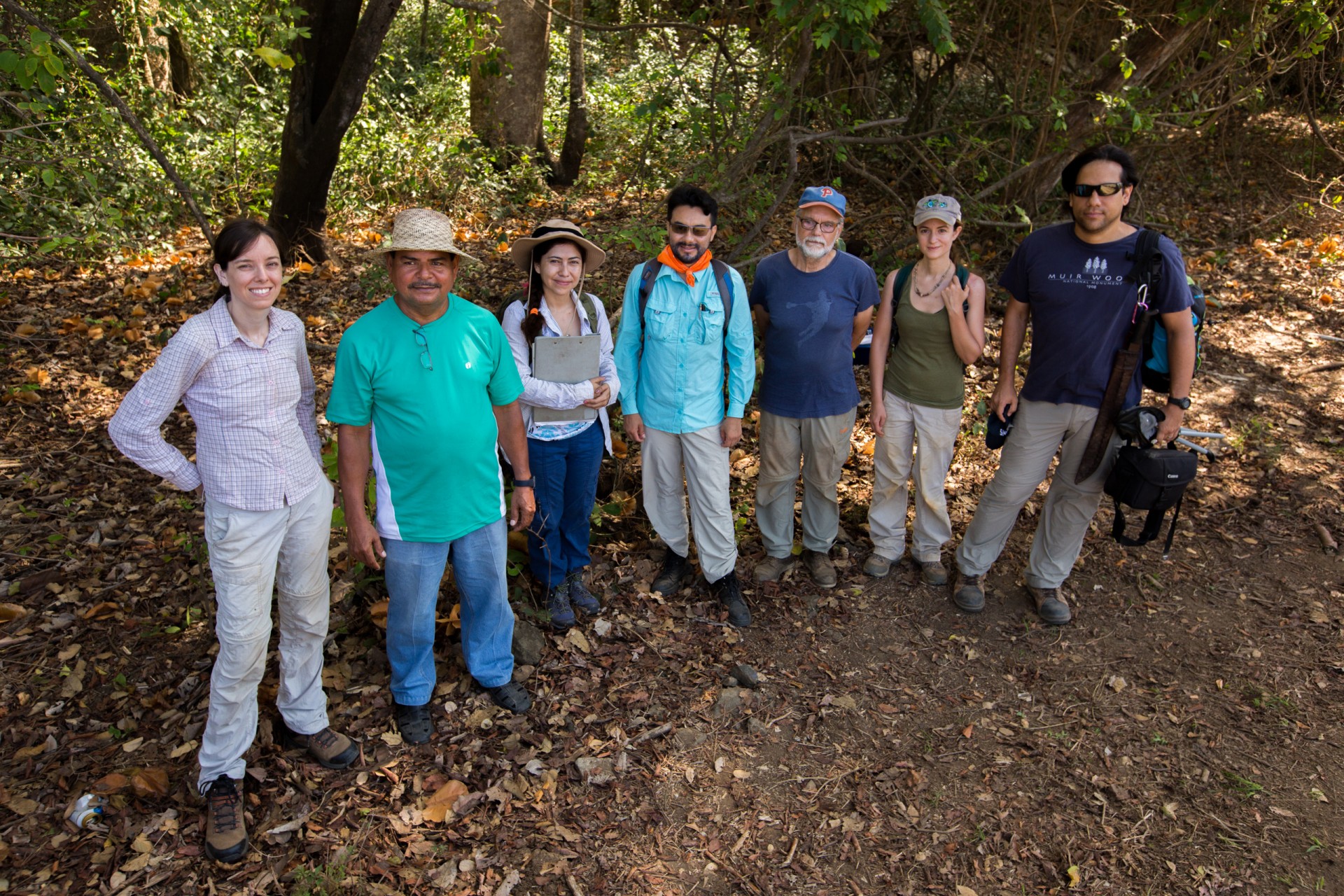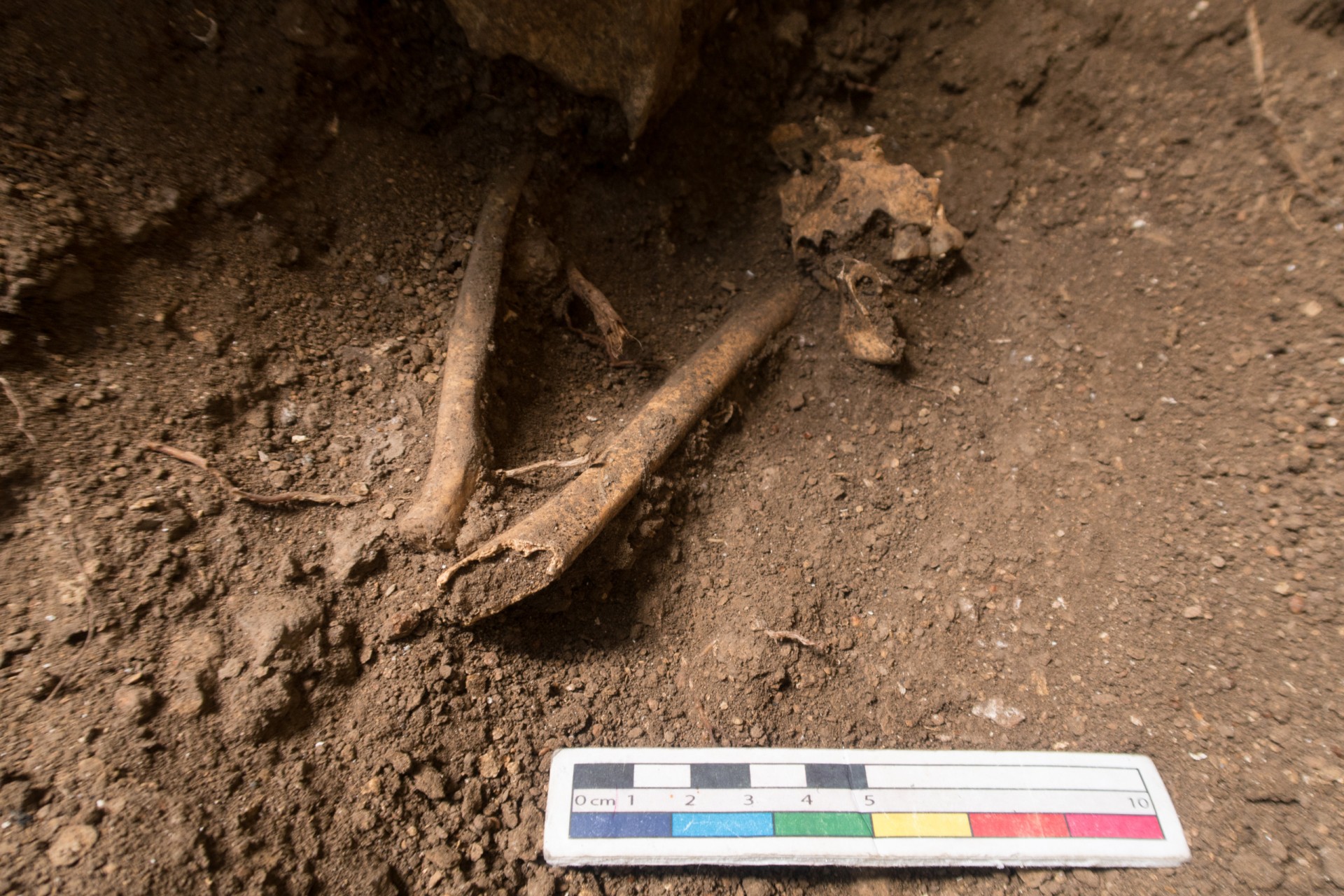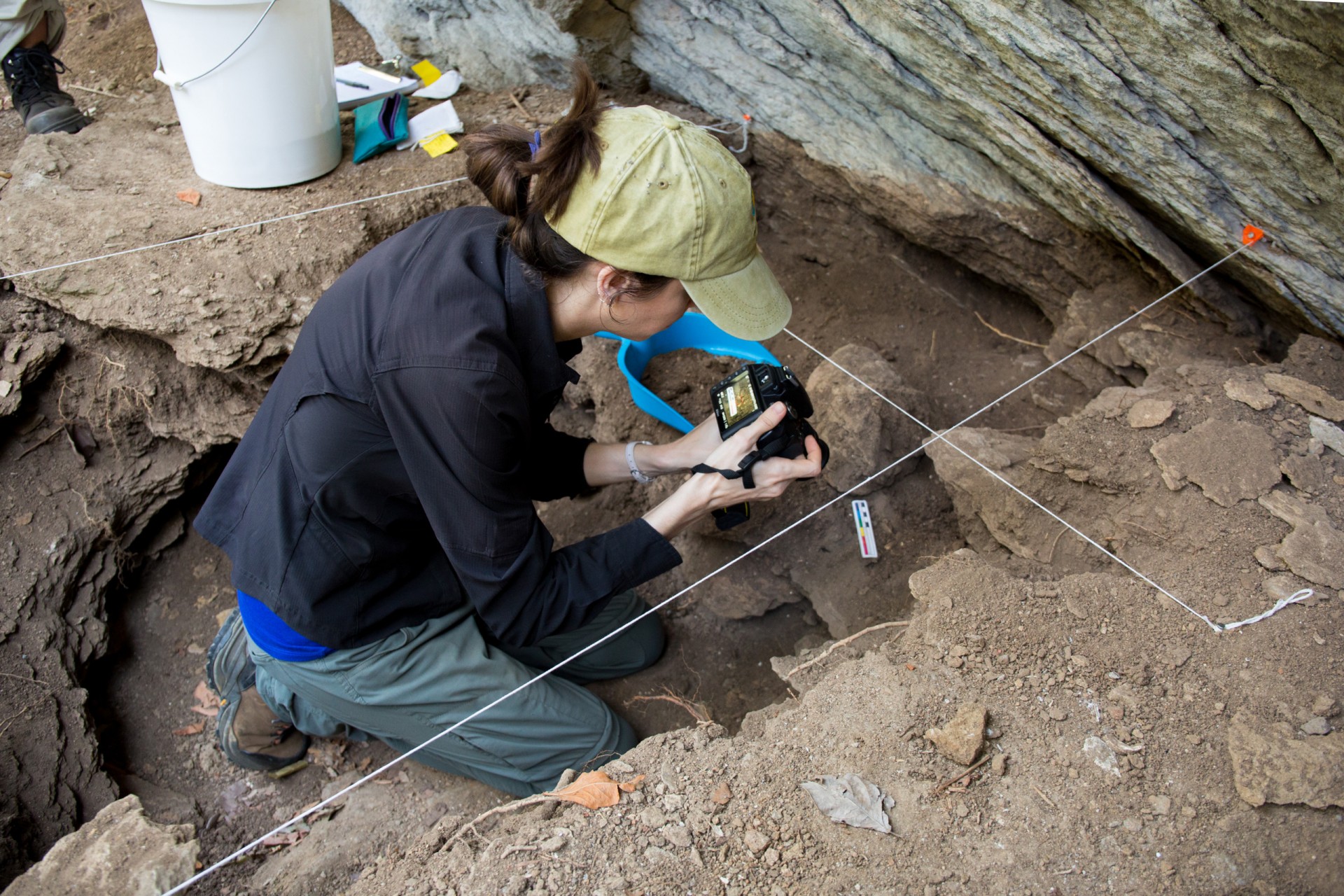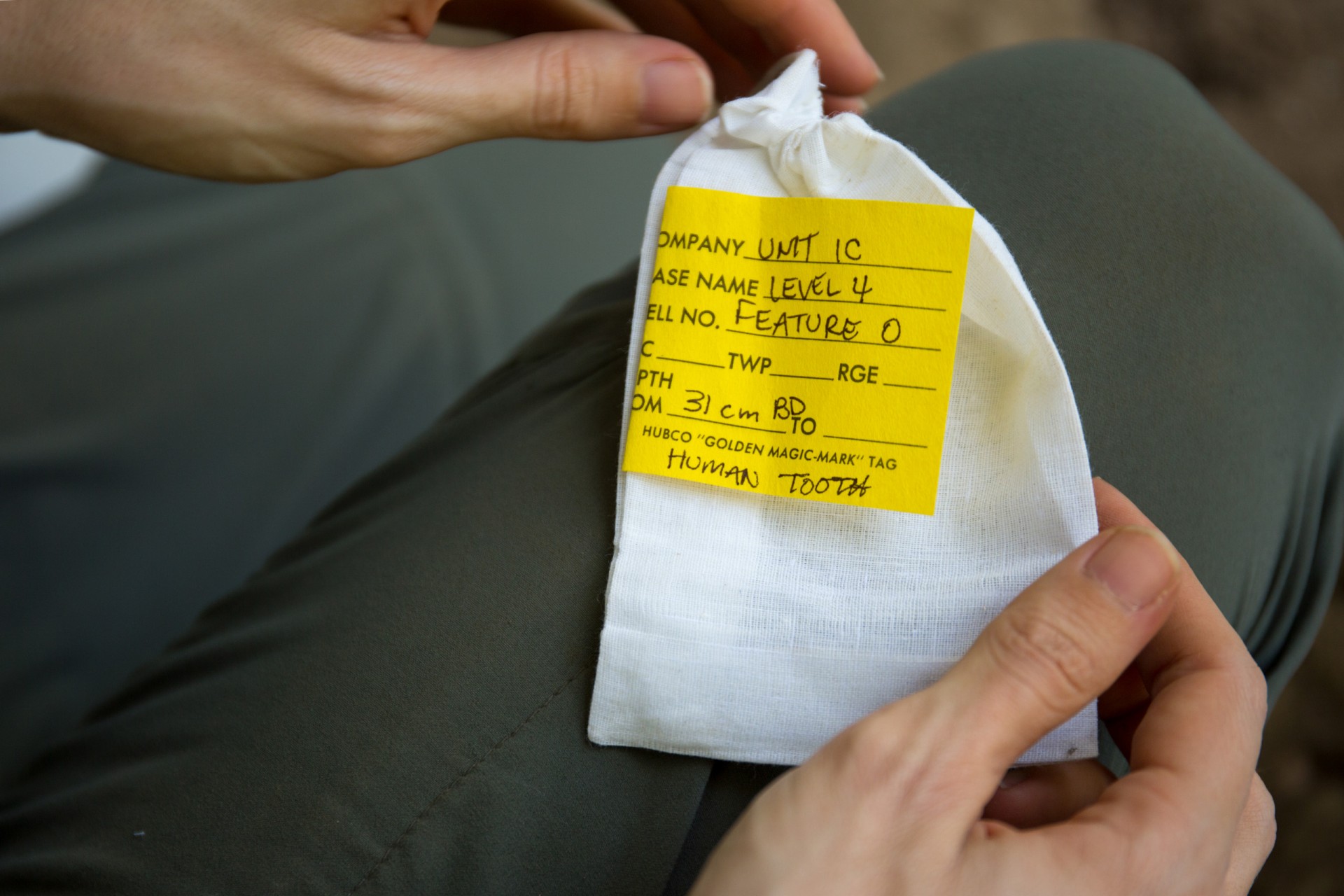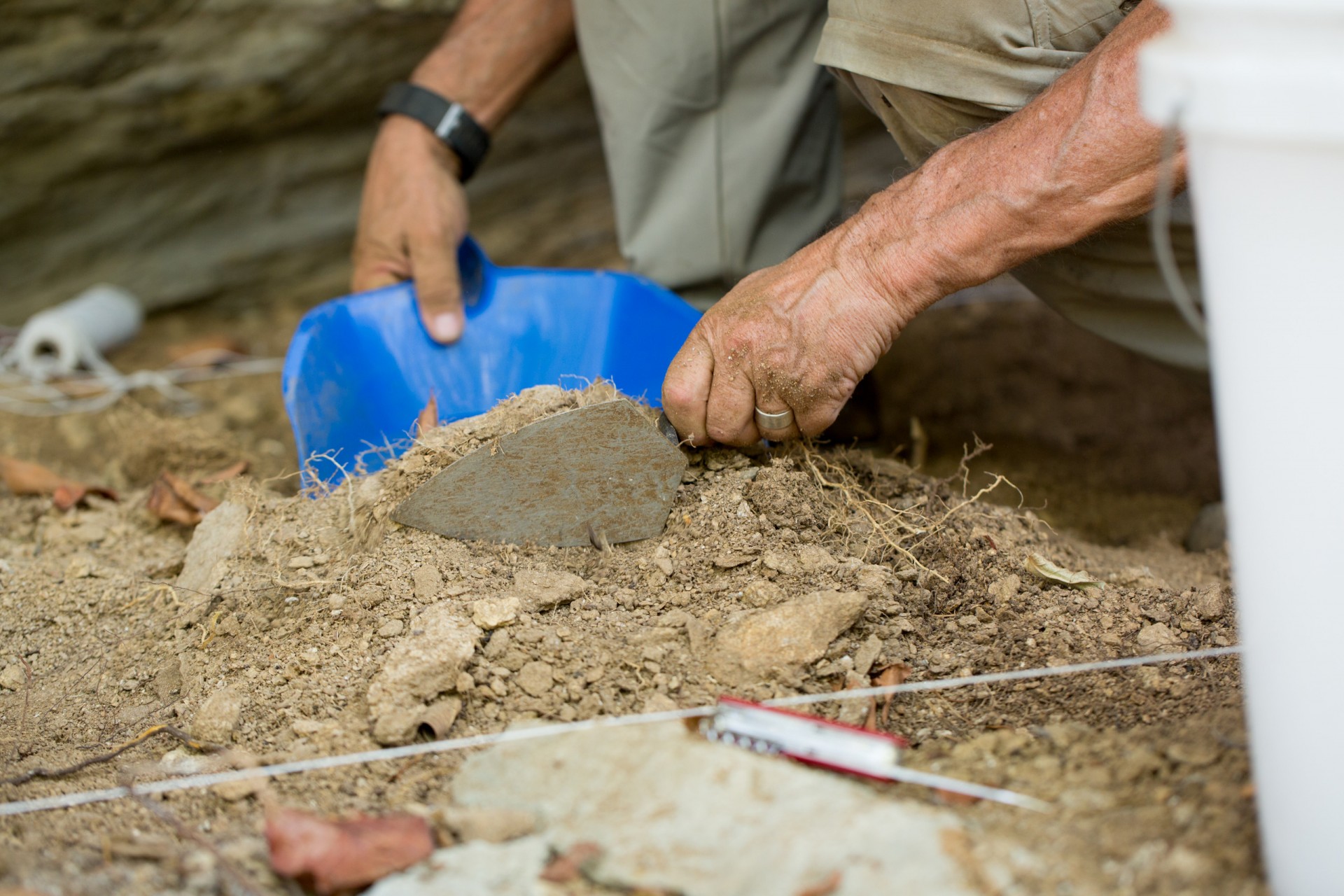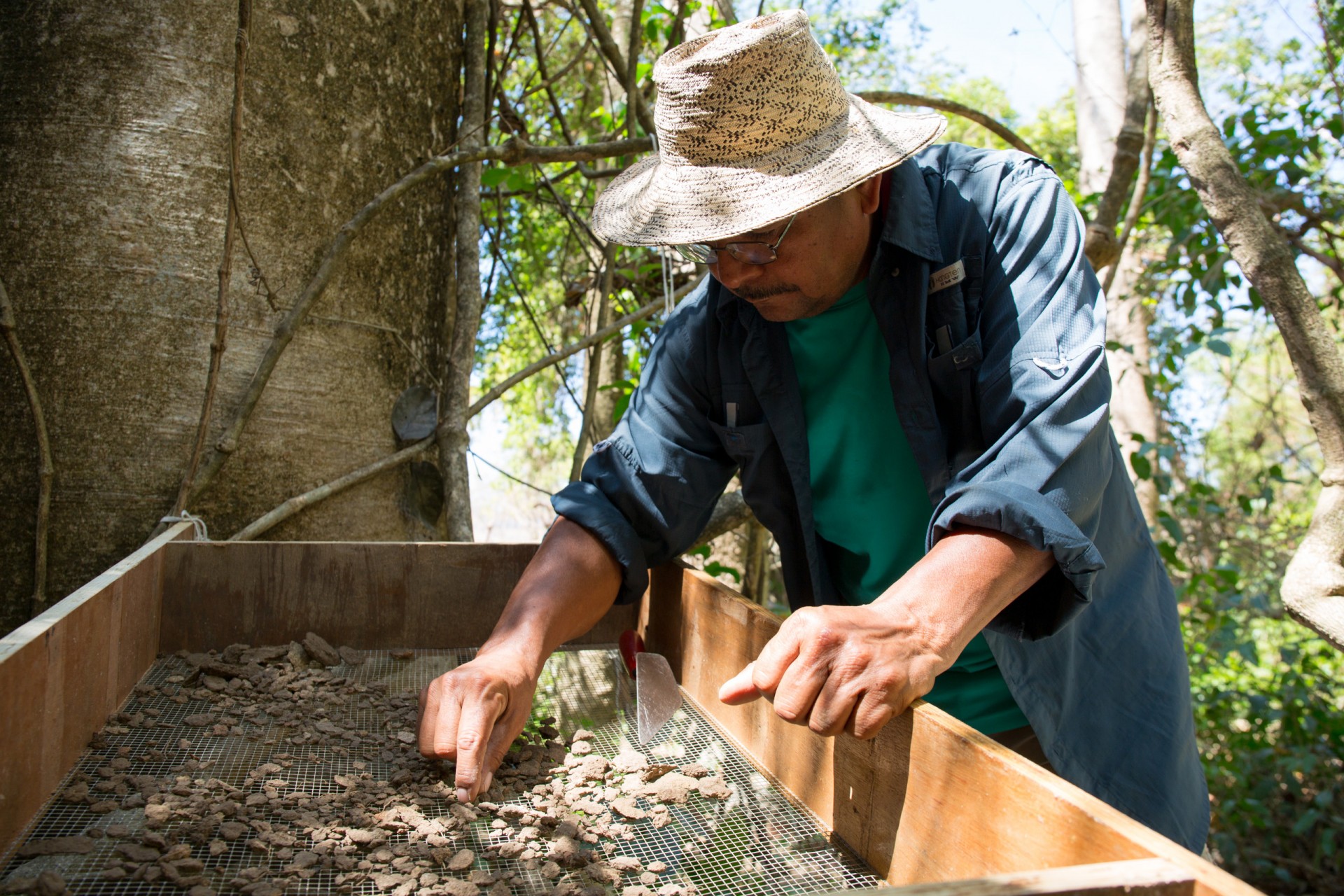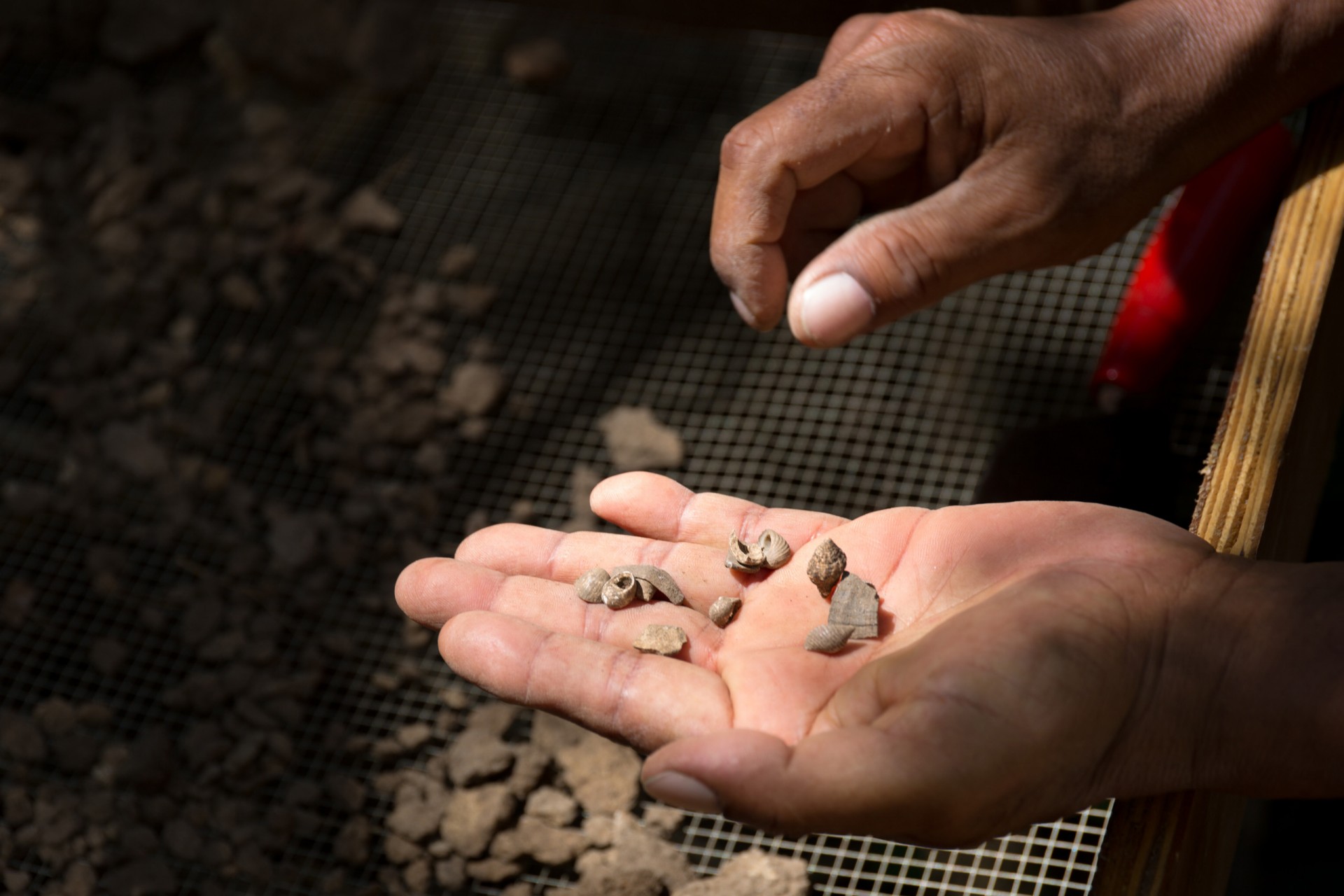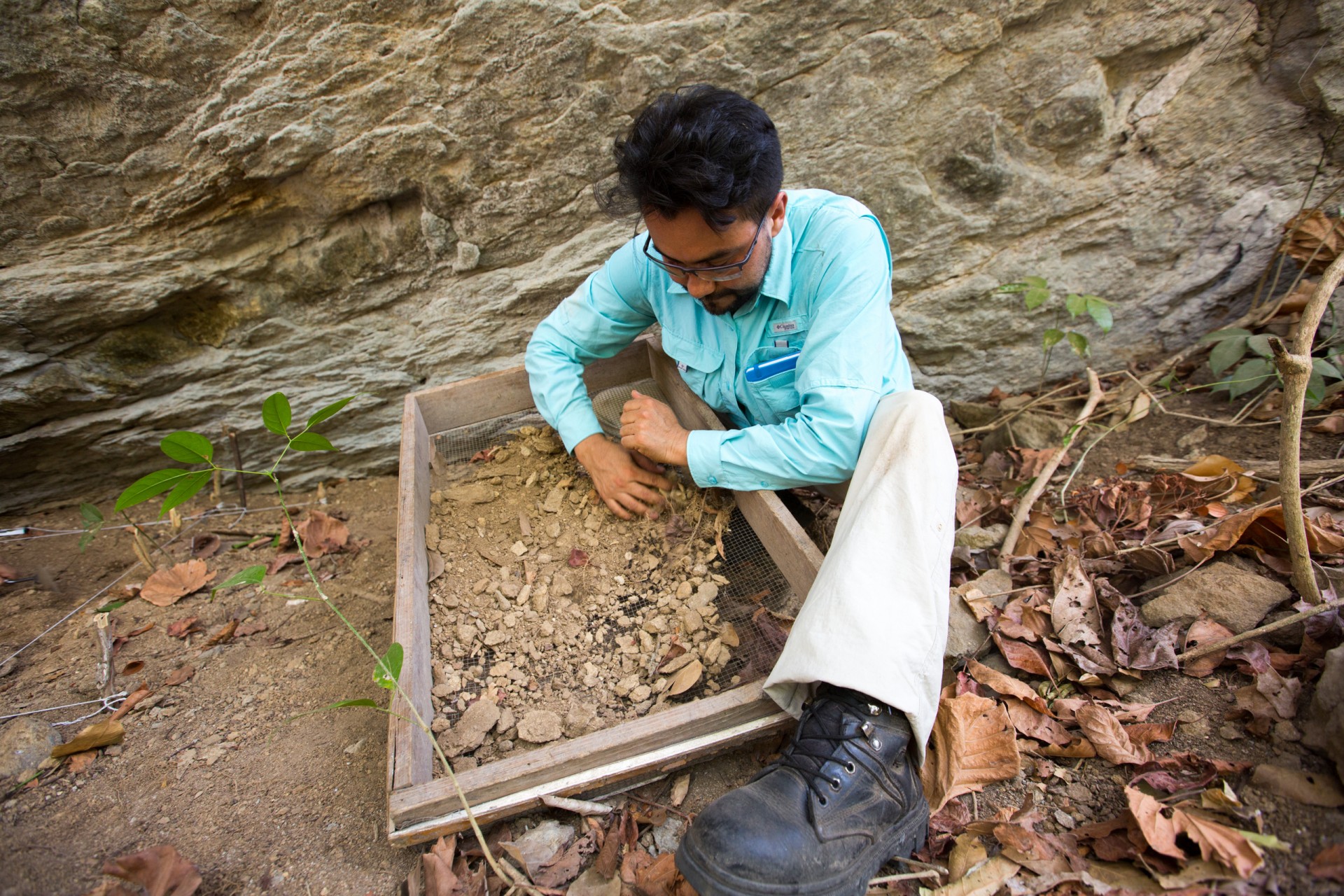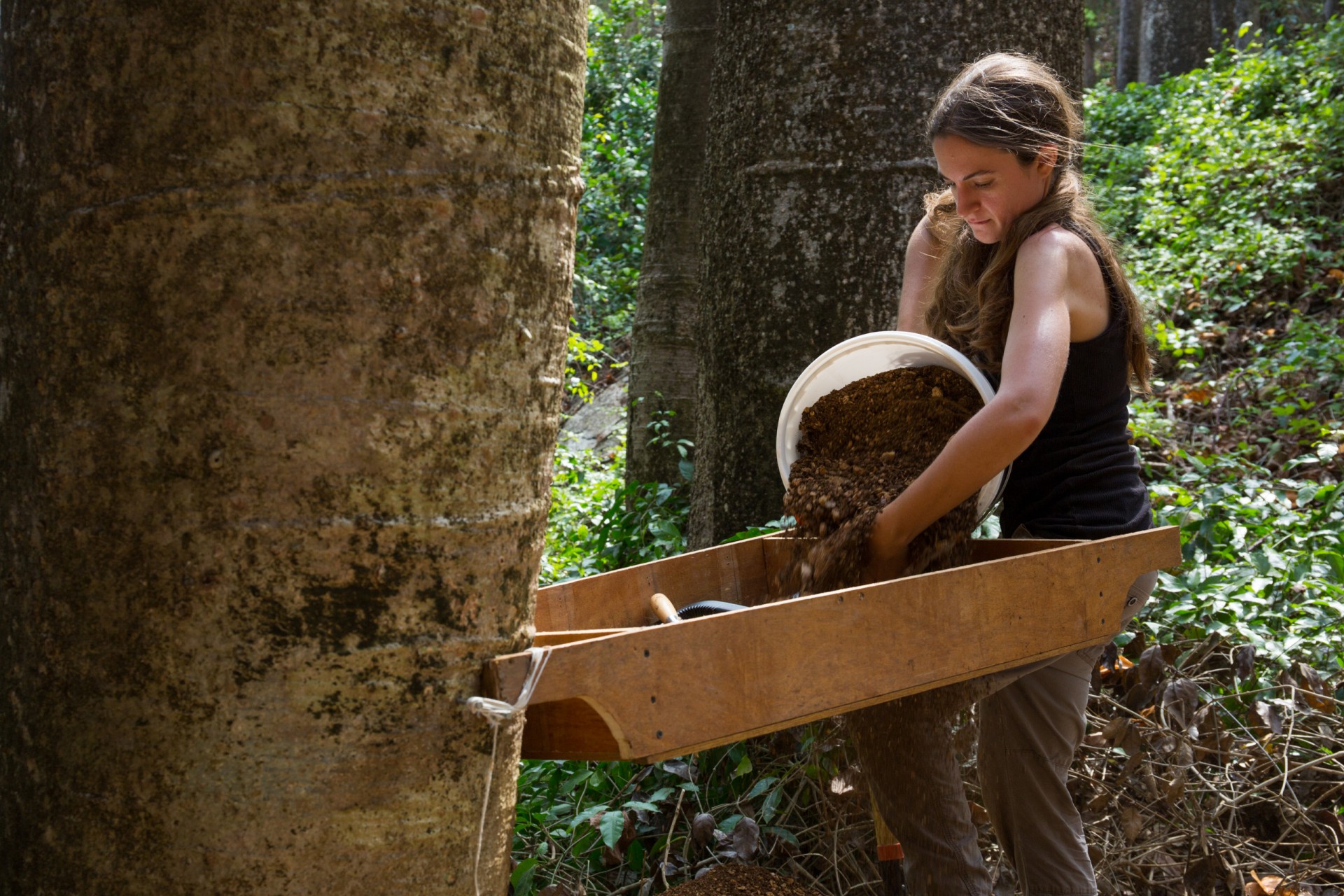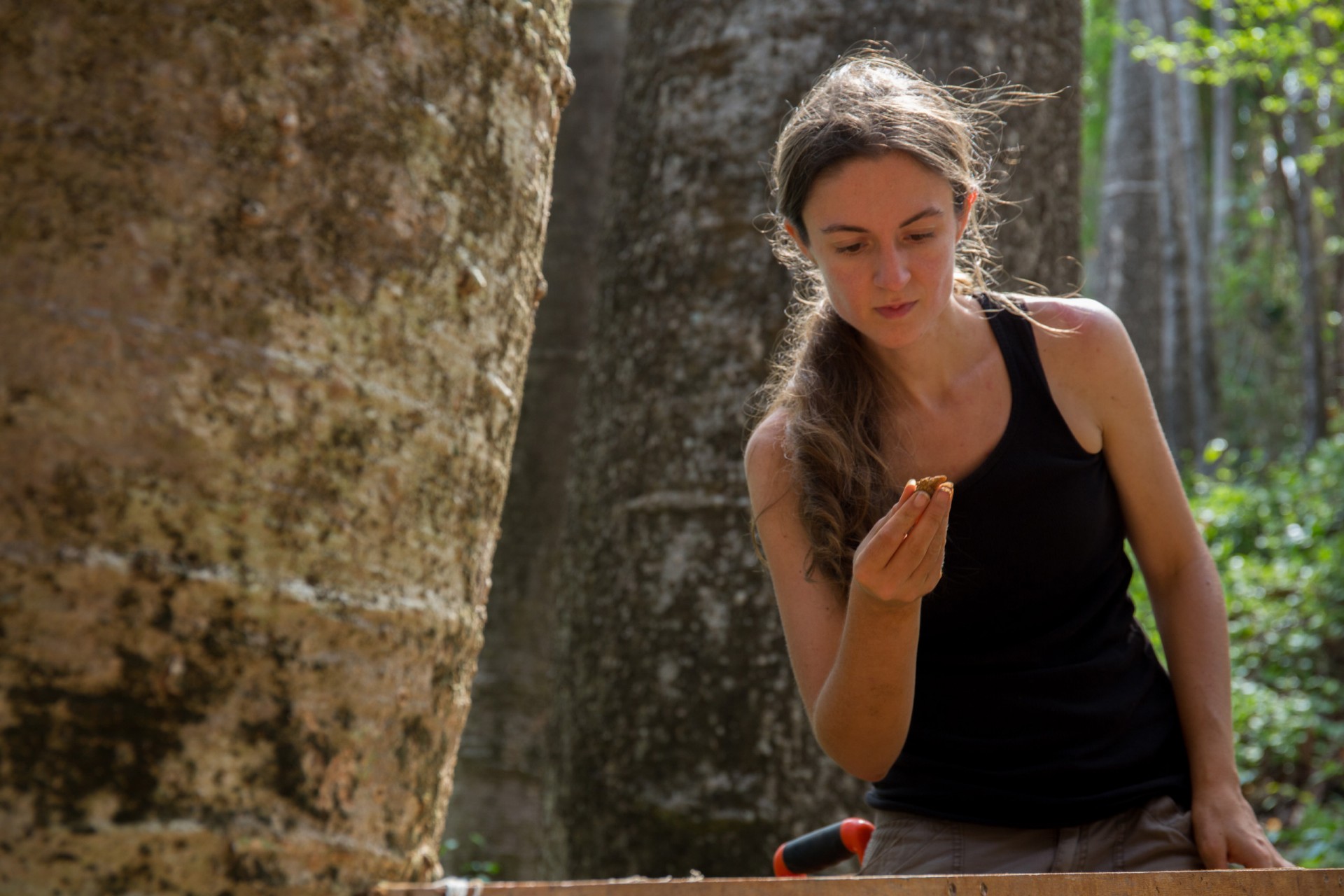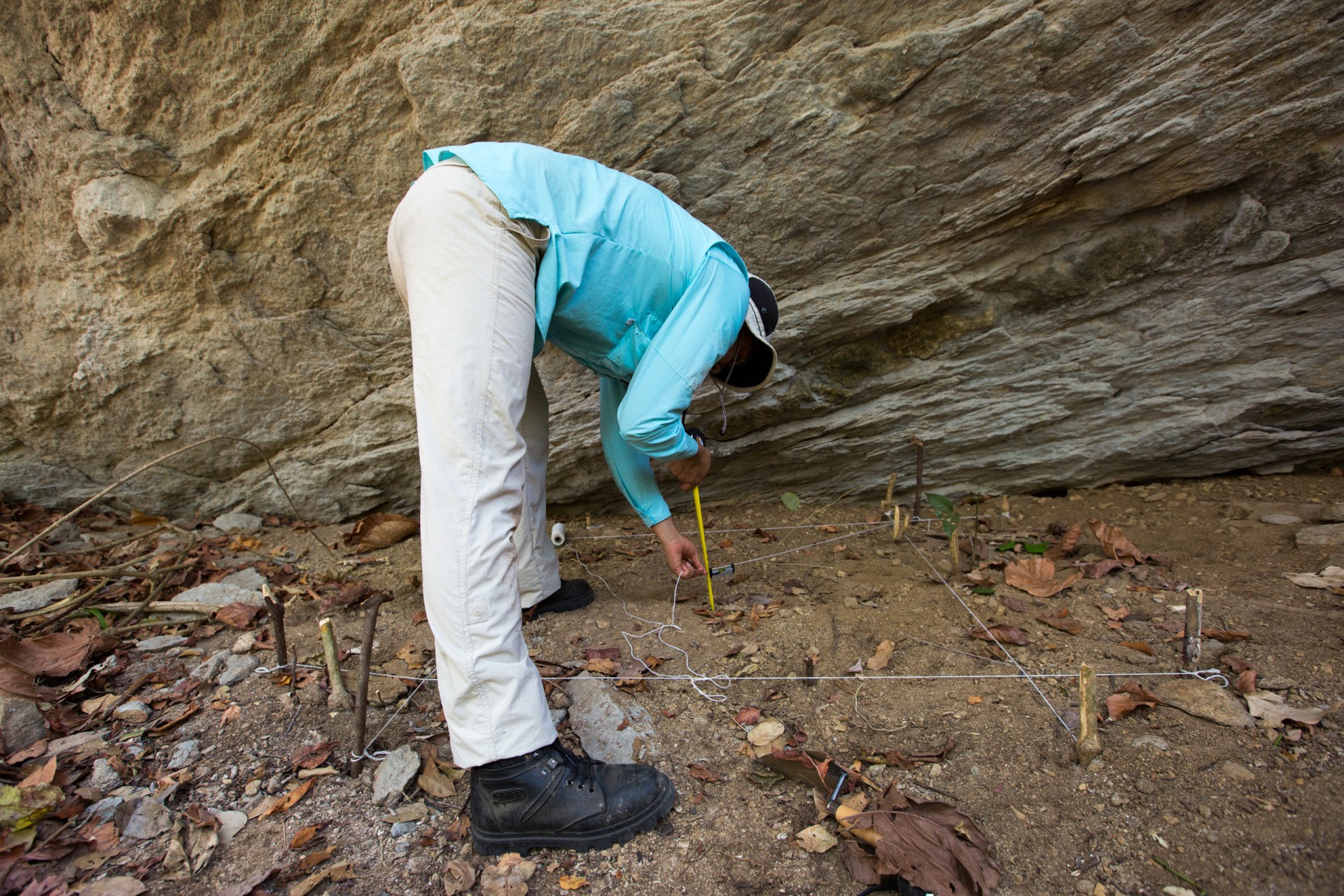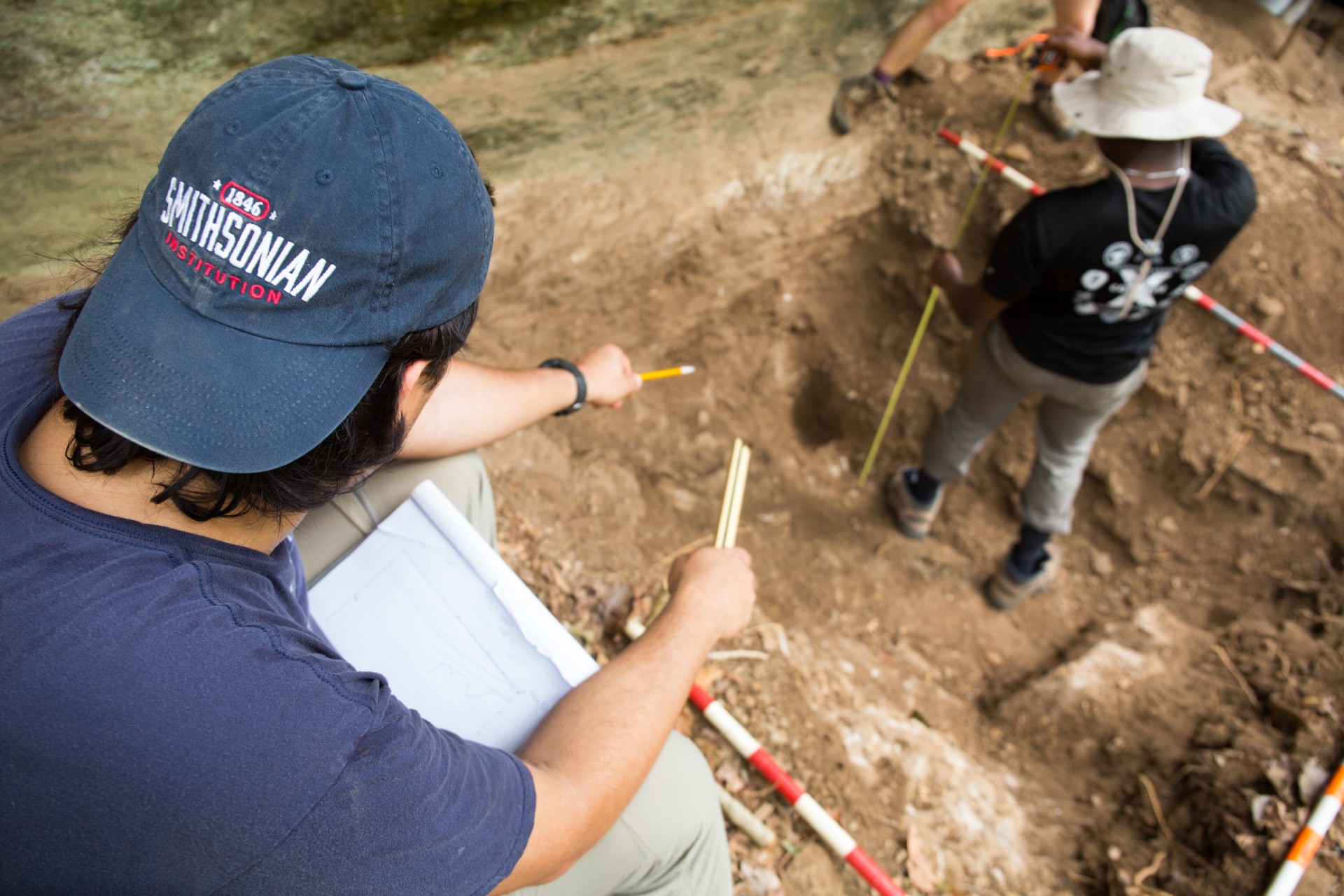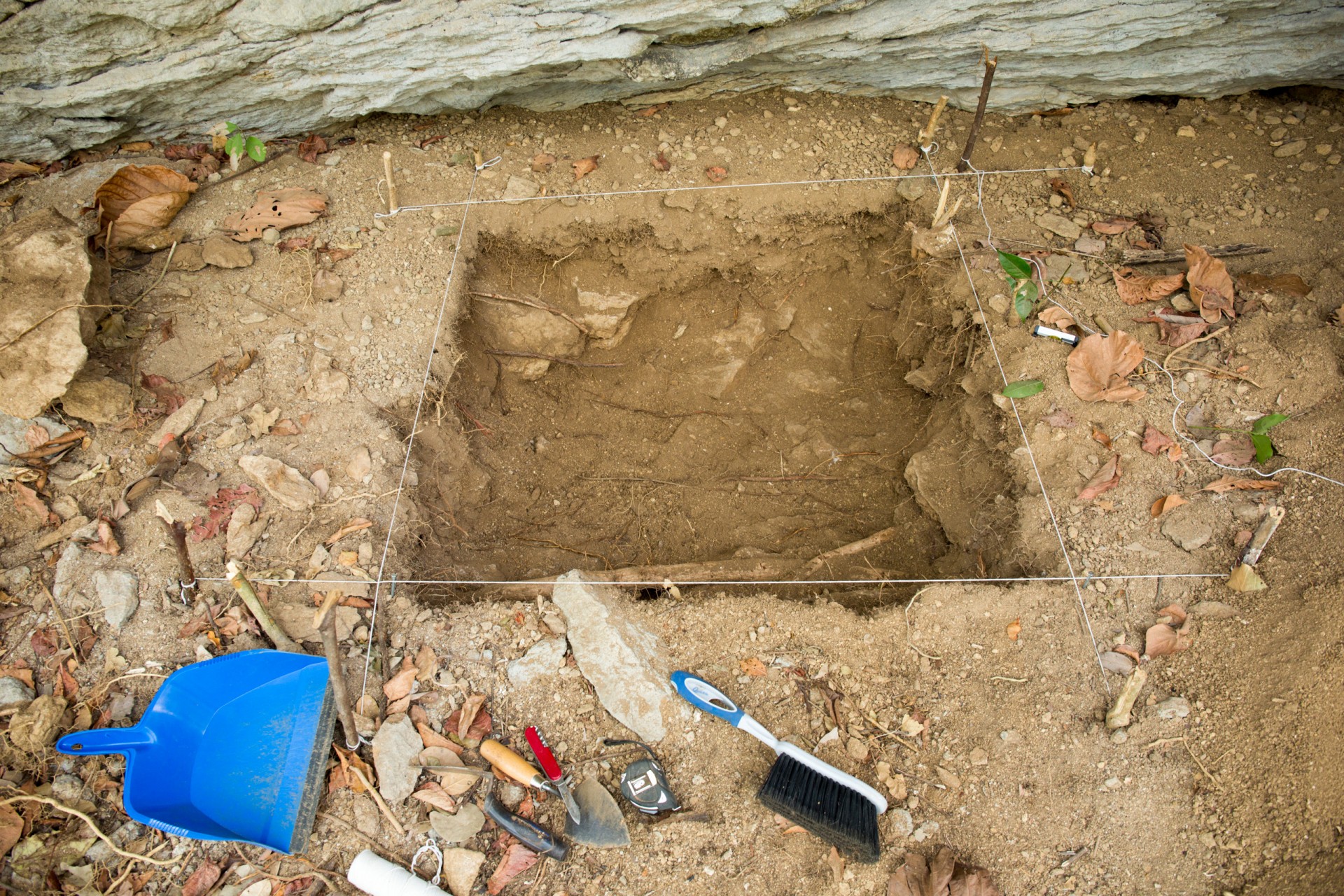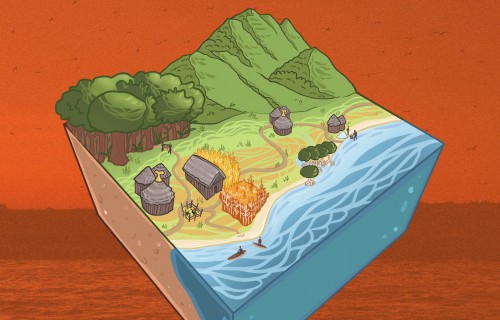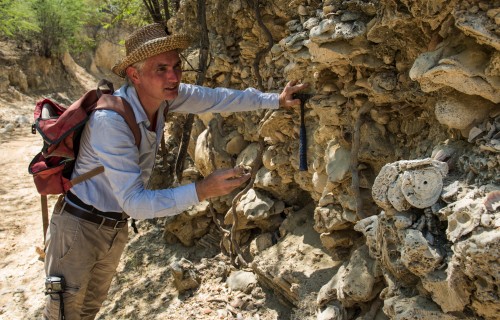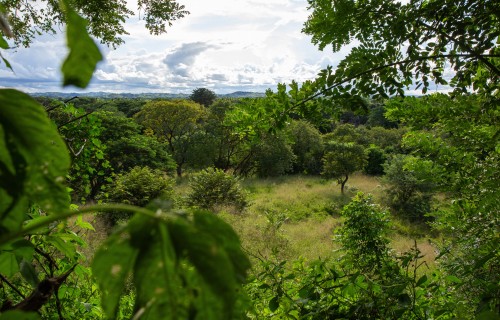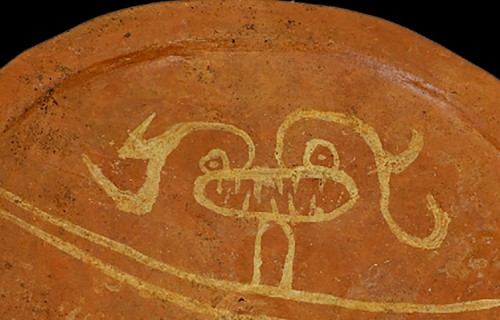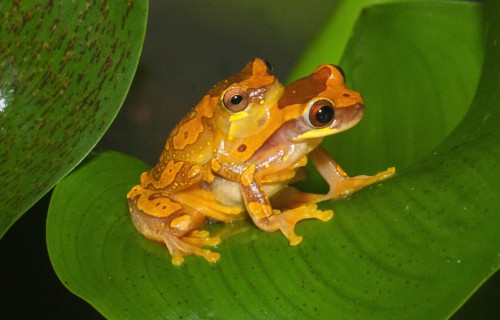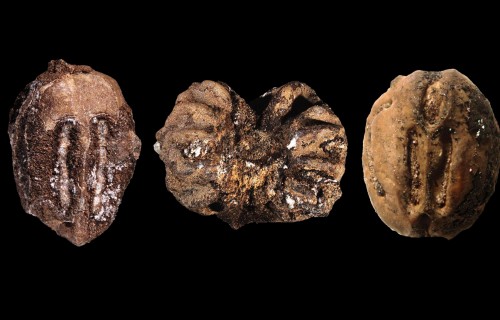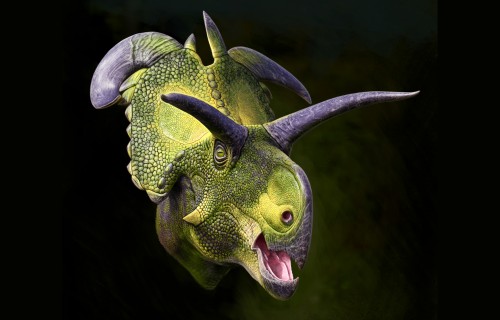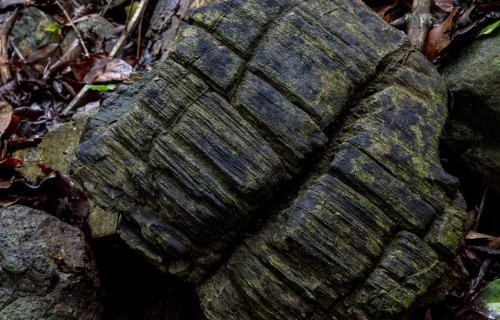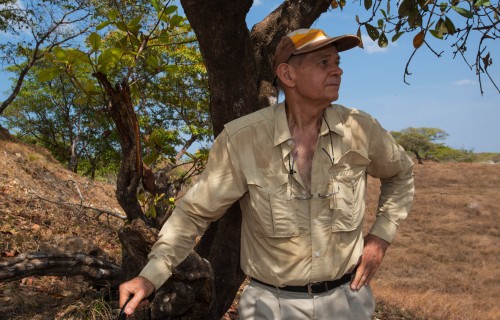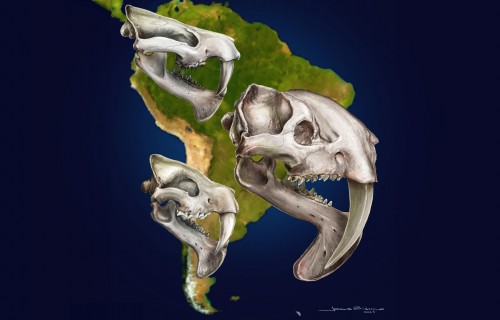Uncharted
territory
On the lookout for
Paleopanamanians
Azuero
Text by Leila Nilipour
STRI archaeologists believe the first inhabitants of the isthmus of Panama may be resting beneath an unexplored corner of the Azuero peninsula
Forty minutes from the endless Cambutal beaches that draw surfers from around the world, and down dirt roads bordered by wild hibiscus and crisscrossed by rivers, our expedition reaches the southwest corner of Panama’s Azuero peninsula. Ashley Sharpe, archaeologist and staff scientist at the Smithsonian Tropical Research Institute (STRI), hopes that the remains of the first humans who arrived on the isthmus, the ‘paleoindians’, will be found here. This archaeological site on Punta Blanca, which has never been explored before, is one of the areas closest to the edge of the continental shelf on the Panamanian Pacific coast, where relatively shallow coastal waters plunge to the deep ocean floor.
Unlike this region of Azuero, along most of Panama’s coastline, several kilometers of shallow water separate the land from this abyss. But when the first humans reached Panama more than 10,000 years ago, these shallow areas were still part of the mainland. Then the world warmed, melting glaciers and raising sea levels. Coastal plains were submerged and, with them, the remains of their first inhabitants. Because the southwest coast of Azuero hasn’t changed as much from when the first paleoindians arrived Sharpe is hoping to discover them here.
At the end of April, STRI archaeologists organized an expedition to the region with a team of specialists: in addition to Sharpe, who uses isotope techniques to identify the origins of animal remains; Nicole Smith-Guzmán, bioarchaeologist, is an expert on human bones; research associate Tomás Mendizábal is skilled in characterizing ceramics and their chronology; and the veteran Anthony Ranere, professor at Temple University, is capable of recognizing different stone tools, their age and their uses. Other collaborators were STRI fellow Jeison Chaparro, adept student of botanical and faunal remains; Evelyn Chan, skilled in her knowledge of ceramics and mapping; and over a dozen Princeton University students.
They dug around a rock shelter near the coast, surrounded by large cuipo trees. The location could have served as a shelter for ancient humans. Although the preservation of bony remains is usually rare in the tropics, the limestone of the refuge and its surroundings, as well as the protection from the rain and temperature changes offered by the enormous rock, could have resulted in their conservation.
“Our goal is to dig until we hit bedrock or sterile sand, when we know there will be no more chance of finding human evidence,” Sharpe said.
Archaeology in itself is a destructive process. When a site is intervened, things will never return to their original state. Therefore, excavation requires meticulous work, and any observations in the field must be written down immediately. The earth is delicately removed with trowels and sifted to separate any evidence –bone or ceramic fragments or stone tools– from the sediment. Every ten centimeters of depth is designated as a separate level, which allows the findings to be classified for future analysis in an orderly manner.
First a tooth emerged. A molar, specifically. Its exact location was noted within a map of the unit, and it was put away in a bag identified with the same coordinates. As the days went by, more human bones were found, including a jaw, loose teeth and two skulls, one belonging to a child and another that seemed to have been an adult woman. The team also found seeds, animal bones, marine snails and ceramic fragments, in addition to carbon remains, a powerful resource for determining the age of an object.
Given that it was a short expedition, which will be resumed in the dry season, archaeologists covered the last excavated level of each unit with plastic and poured the sifted soil back in. Most of the units had reached over a meter in depth, and still hadn’t hit bedrock. In the next visit to the field, the plastic will mark the new starting point for the excavation.
In the meantime, Smith-Guzmán has been able to advance analyses of the bones retrieved from the site. A pair of loose teeth, belonging to the same child, present enamel lesions, possibly due to malnutrition or infectious disease. On its long bones, the bioarchaeologist found evidence of inflammation.
She estimated that the skull belonged to an adult between 25 and 45 years old. Although she hopes to recover the pelvis of the same skeleton on the next expedition and to calculate its age and sex with greater precision, she did find some osteoporosis in the bones, indicative that the person could have been closer to the upper end of the age range.
This skeleton also had several extra teeth in the mandible, no surprise to Smith-Guzmán. After spending several years analyzing hundreds of skeletons retrieved from different sites around the country, the STRI postdoctoral fellow found many dental and bone anomalies among the ancient inhabitants of Panama.
“I think this was due to low genetic diversity. It’s a small strip of land, and we know there was, at least when the Spanish arrived, a lot of warfare going on. Maybe they didn’t even interact with their nearby neighbors. The Spanish also talked about different communities having different languages, and that doesn’t happen unless you aren’t interacting with each other,” said Smith-Guzmán.
One of the few clues related to how old the remains are is the artificial modification in the adult skull, a cultural practice associated with more recent times in pre-Hispanic chronology. Ceramic fragments were also found near the skeletons, which according to Mendizábal's analysis coincide with a period 400 to 600 years AD. To be certain, pending analyses of the bones and teeth will determine how long ago people inhabited the site, and provide clues about their diet and geographical origin. Were they local or did they migrate from another region?
Although it seems clear these bones may not belong to the first people to arrive on the isthmus, the next expedition will allow archaeologists to dig deeper, until they reach bedrock or sand, the first surface that a human could have inhabited in the area. Perhaps, then, the ‘Paleopanamanians’ will make their appearance. But while she continues to look for them, Sharpe wishes to explore other locations around Punta Blanca.
“Since there have not been other projects conducted in that area, I think we should expand out a bit and examine the locations where the local people of Cambutal have been finding ceramic sherds. All the people there have been very friendly and are interested in knowing about who was living in that area in prehispanic times, so it would be worth developing a better idea of the history of human settlements in the region,” she concludes.

